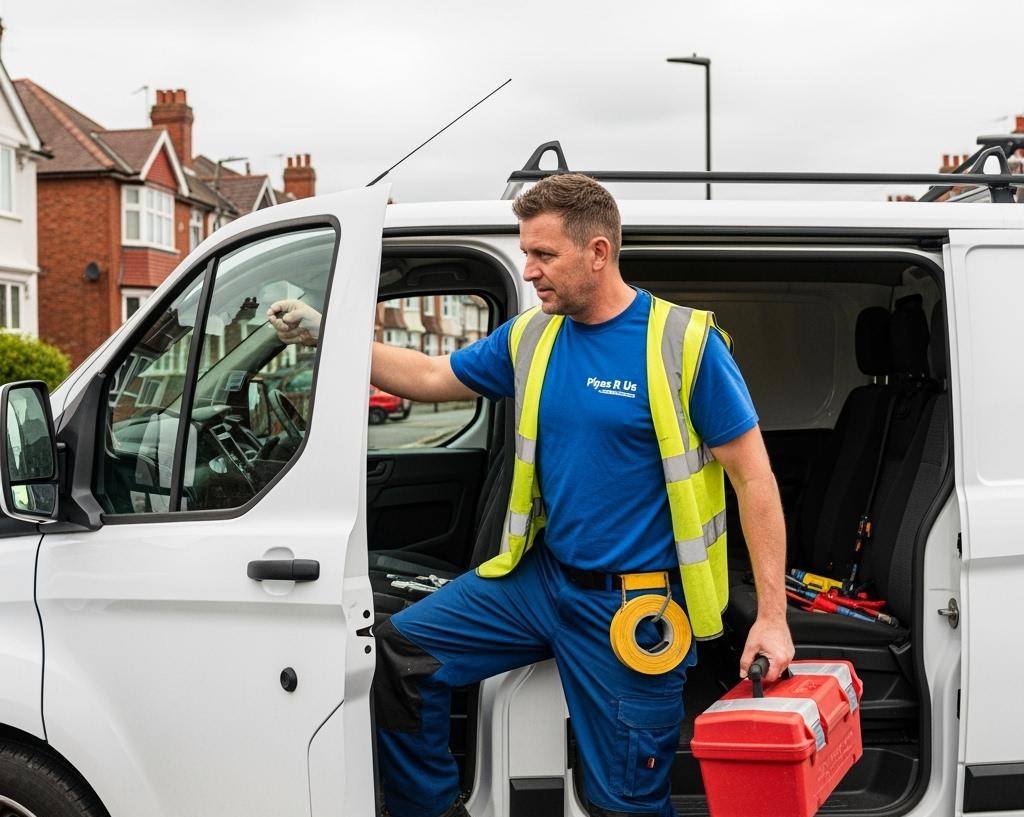
The ultimate guide to buying a used van: Your questions answered.
(Approx: 20 min. read)
Looking to buy a van? Choosing a second-hand model over a new one can mean fantastic money-saving options and a larger choice of makes and models within your budget. With second-hand models generally offering lower insurance premiums and road tax also, paired up with an extended warranty they offer a financially viable long-term investment.
In this comprehensive guide, we’ll cover budgeting, where to buy a second-hand van and the pros and cons likely to be involved with your purchase, so you can feel confident in making your decision.
Key facts at a glance:
- Second-hand vans are generally cheaper to buy, insure and tax than new ones… and depreciate at a much slower pace.
- When looking to buy, be sure to factor in ongoing costs like fuel, insurance, tax and maintenance.
- A large range of makes and models on the second-hand market can represent better value and greater flexibility for budget-conscious buyers.
- VAT may even be reclaimable on your purchase if both buyer and seller are VAT-registered.
- Before completing any purchase, it’s vitally important to check the van’s full service history and perform an HPI check to confirm ownership.
- Also be sure to examine the vehicle’s condition and take it for a test drive before finalising any purchase.
- Most used vans won’t include an extended warranty as standard, so it’s important to consider an extended warranty plan to protect yourself against unexpected repair costs.
- As with any other vehicle, vans must be taxed, insured and have a valid MOT before they can be used on the road.
- Failing to comply with driving or load regulations can result in fines, penalty points or court action.
Use the sections below to jump straight to what matters most, or read on for our full guide to buying a used van:

Why should you buy a second-hand van over a new one?
Buying a second-hand van can make more sense than choosing a brand new one, as it is often much cheaper, both to purchase and to insure. A new van loses value quickly in the first few years, while a used van has already gone through that stage – meaning you get better value for money [2].
Many used vans are still reliable and well-maintained, so you can almost certainly find one that meets your needs without the higher cost of a new model.
Key reasons to buy second-hand:
There are several strong reasons why buying a used van can make great financial and practical sense.
- Used vans are cheaper than buying new, saving you money.
- It’s possible to claim back VAT paid on the purchase.
- The vehicle’s steepest drop in terms of depreciation has already taken place.
- Lower insurance premiums are more likely.
- Wider selection of makes and models to choose from within your budget.
First and foremost, you’ll more than likely pay significantly less upfront compared to buying a brand-new model, saving yourself money right from the start. For many businesses or self-employed drivers, that lower initial cost can make upgrading or expanding a fleet for example, much more affordable.
If you’re VAT-registered, you may also be able to claim back the VAT paid on the purchase of a used van, depending on how the sale is structured. This can lead to even bigger savings.
Another major advantage is that a used van has already gone through the steepest part of its depreciation curve, meaning its value won’t drop as quickly after you buy it. This stability makes it a smarter investment if you plan to resell later on.
You’ll also likely benefit from lower insurance costs, as premiums for used vehicles are generally cheaper than for new ones., and the used market offers a much wider selection of makes, models and specifications to choose from.

What are the downsides of buying a second-hand van?
While buying a second-hand van can be a smart financial move, there are a few important considerations to keep in mind.
- Full service history may not be available, depending on the records kept by the previous owner/s.
- Used vans often have either limited or no extended warranty plan in place. Get a quote here.
- More frequent maintenance may be required due to older parts.
- Regular servicing is essential.
- Older models may lack the latest technology or safety features.
One of the main drawbacks is the potential lack of a full service history for the vehicle, even if you obtain a history or HPI report. These checks are useful, but they don’t always reveal how well the van has (or has not!) been maintained by previous owners.
Most used vans also come with limited or no warranty plan, which means any unexpected repairs could come straight out of your pocket. This can make it worthwhile to consider an extended warranty plan for extra peace of mind.
Used vans may also require more frequent maintenance, as older parts are more likely to wear down over time. Regular (yearly) servicing becomes especially important to keep them running smoothly and prevent costly breakdowns.
Older models may lack the latest technology or safety features, such as advanced driver-assist, improved fuel efficiency or updated infotainment options. While these factors don’t affect every buyer, they’re worth weighing up when comparing different models and budgets.

Where is the best place to buy a second-hand van?
When it comes to buying a second-hand van in the UK, you have several options, each with its own advantages and disadvantages. The ‘best’ place depends on your budget, how much peace of mind you want and how confident you are in your own mechanical knowledge.
Large van dealerships:
Dedicated dealerships that specialise in selling used vans, and often have a wide network across the UK.
| Pros: | Cons: |
|---|---|
| Peace of mind: Vans are typically checked, serviced, and come with a warranty. | Higher prices: You will pay a premium for the peace of mind, professional preparation, and warranty. |
| Large inventory: They often have hundreds of vans in stock, giving you a huge variety of makes, models, and specifications to choose from. | Less room for negotiation: The prices are often fixed or have very little wiggle room. |
| Finance options: They can arrange finance packages, including HP and finance lease, which are specifically designed for commercial vehicles. | |
| After-sales support: They have service centres and customer support to help with any issues after the sale. |
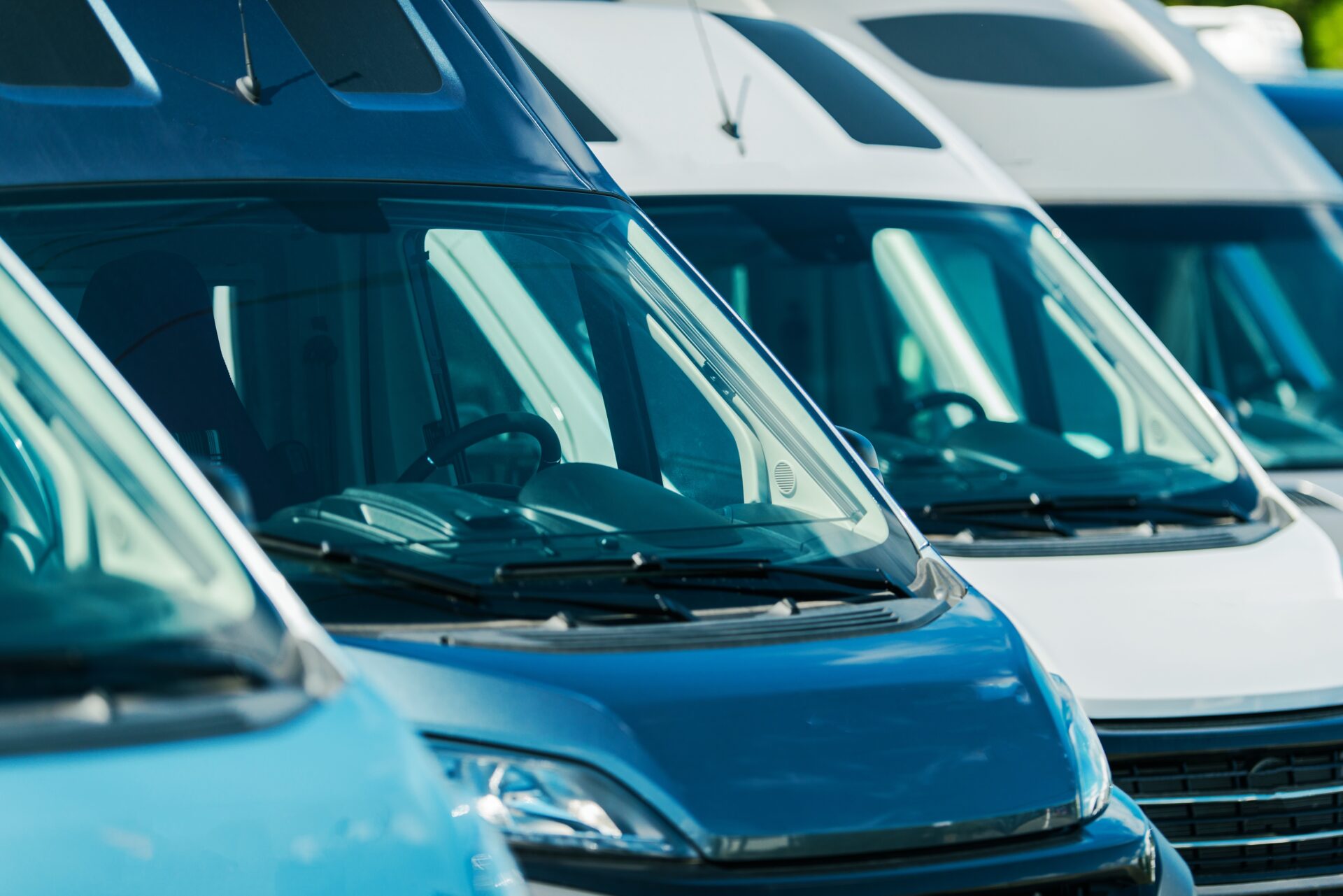
Online marketplaces:
These websites act as a hub, listing vans from both private sellers and dealerships across the country. Examples: Auto Trader, Motors.co.uk, Van Monster, AA Cars.
| Pros: | Cons: |
|---|---|
| Peace of mind: Vans are typically checked, serviced, and come with a warranty. | Varying quality: The quality of the vehicles can be inconsistent, especially from private sellers. It's crucial to do a thorough inspection. |
| Large inventory: They often have hundreds of vans in stock, giving you a huge variety of makes, models, and specifications to choose from. | Scams: As with any online marketplace, you need to be vigilant about potential scams or misrepresentations. |
| Finance options: They can arrange finance packages, including HP and finance lease, which are specifically designed for commercial vehicles. | Private sellers: While a private seller might offer a lower price, the van may not come with a warranty, and you have fewer legal protections if something goes wrong. |
| After-sales support: They have service centres and customer support to help with any issues after the sale. |

Independent local dealers:
These are smaller – often family-run – businesses that specialise in vans.
| Pros: | Cons: |
|---|---|
| Personalised service: They often offer a more tailored and personal buying experience. | Variable quality: The quality and level of aftercare can vary significantly. It is essential to check their online reviews and reputation. |
| Specific knowledge: They might have excellent knowledge of a particular make or model. | Limited stock: They won't have the same vast inventory as a nationwide chain. |
| Flexibility: You might have more room to negotiate on the price or get a more flexible finance deal. |
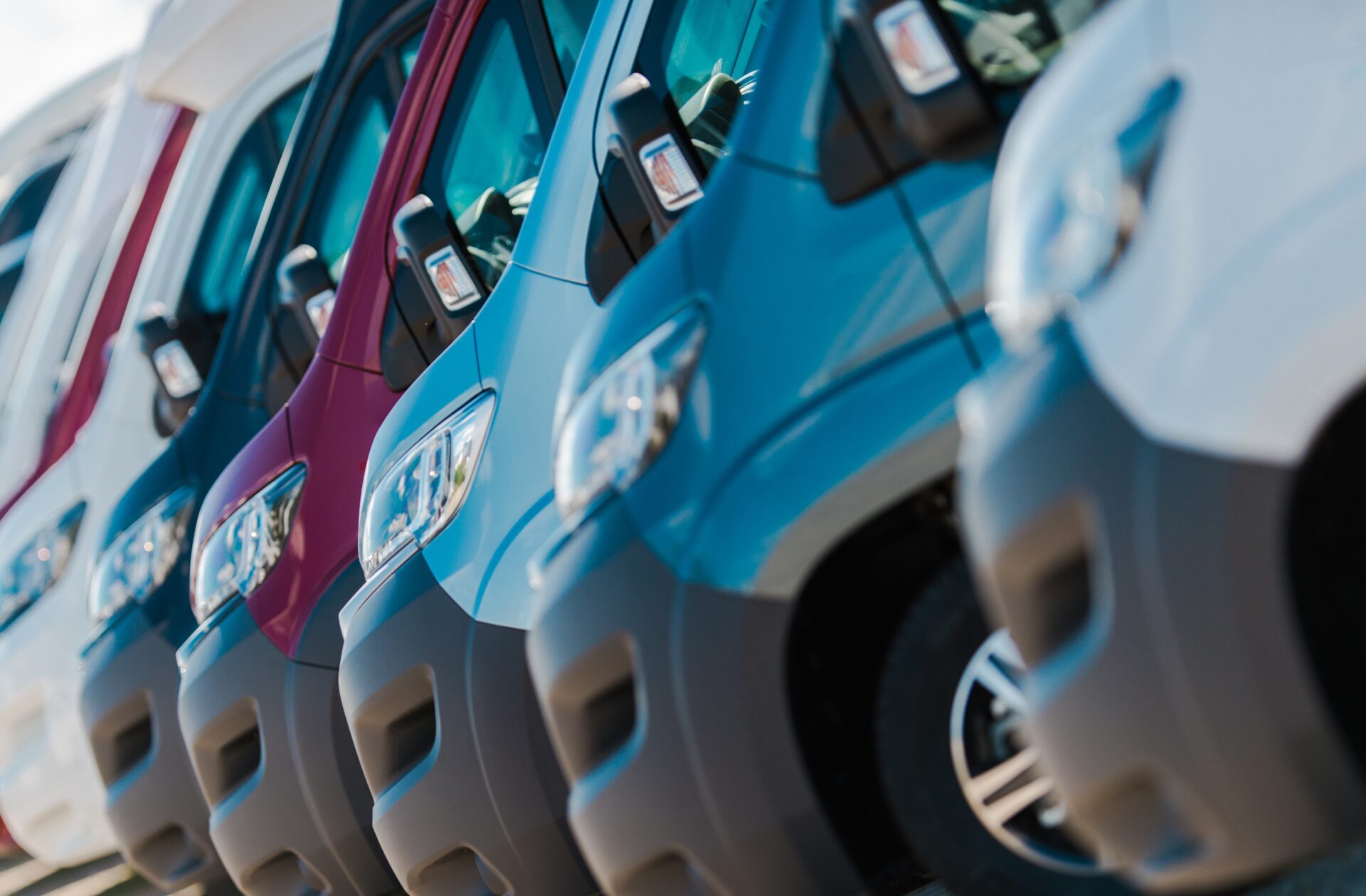
Auction houses:
Auction houses may offer vans and commercial vehicles to the highest bidder. Auctioneers such as Manheims, Bidspotter and G3 Vehicle Auctions.
| Pros: | Cons: |
|---|---|
| Potential for a bargain: You can often pick up a van for well below its market value. | High risk: Vehicles are sold "as is," often with no chance to test drive and only a brief visual inspection. You have no comeback if you find a major mechanical fault. |
| Fast process: If you're successful, you can drive away with a van the same day. | Buyer's premium and fees: The final price can be significantly higher than your winning bid once all fees and taxes are added on. |
| Not for beginners: This is a high-risk route and is only recommended for those with a good understanding of vehicle mechanics and the resources to fix any major issues. |

Top tips for buying a second-hand van:
Get a history check:
Before you commit, a full HPI (Hire Purchase Information) check is essential. It will tell you if the van has outstanding finance, has been stolen or written off.
Check for VAT:
Many used vans are sold with VAT (Value Added Tax) on top of the advertised price, especially from dealers. Make sure to check if the price advertised includes VAT.
Inspect thoroughly:
Whether you’re buying from a dealer or a private seller, you should always inspect the van thoroughly. Check the bodywork for rust and damage, look for signs of heavy use in the load bay and check for a full-service history.
Test drive:
Take the van on a test drive. Listen for strange noises, check the steering, brakes and clutch, and make sure everything feels right.
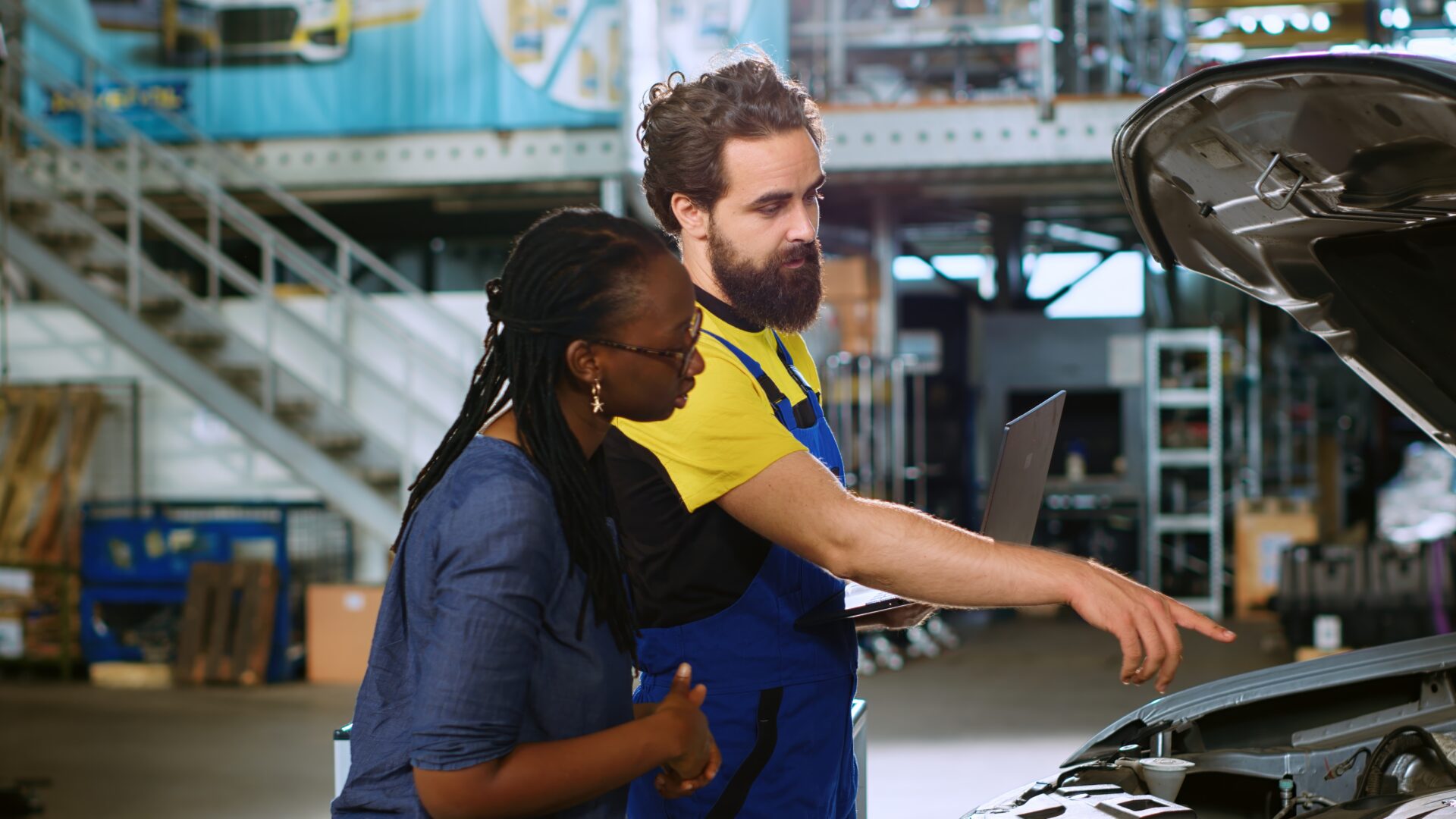
What type of van suits my needs?
Choosing the right type of van depends on what the van will be used for, where it will be driven, and how much space is needed.
- Panel vans like the Ford Transit or Volkswagen (VW) Transporter offer spacious and versatile cargo areas, but can be bulky and less fuel-efficient.
- City vans such as the Ford Transit Connect or VW Caddy are compact and great for urban driving with easier parking and better fuel economy but have less cargo space.
- Car-derived vans are small, easy to drive, and economical but have limited load capacity.
- Medium vans provide a good balance of cargo space and manoeuvrability.
- Large vans offer maximum payload and volume but can be harder to park and more costly to run.
- Pick-ups and 4x4s provide versatility and off-road capability but have exposed cargo areas that may not protect goods from weather.
Considering these factors helps match the van type to specific business or personal needs for optimal use and efficiency.
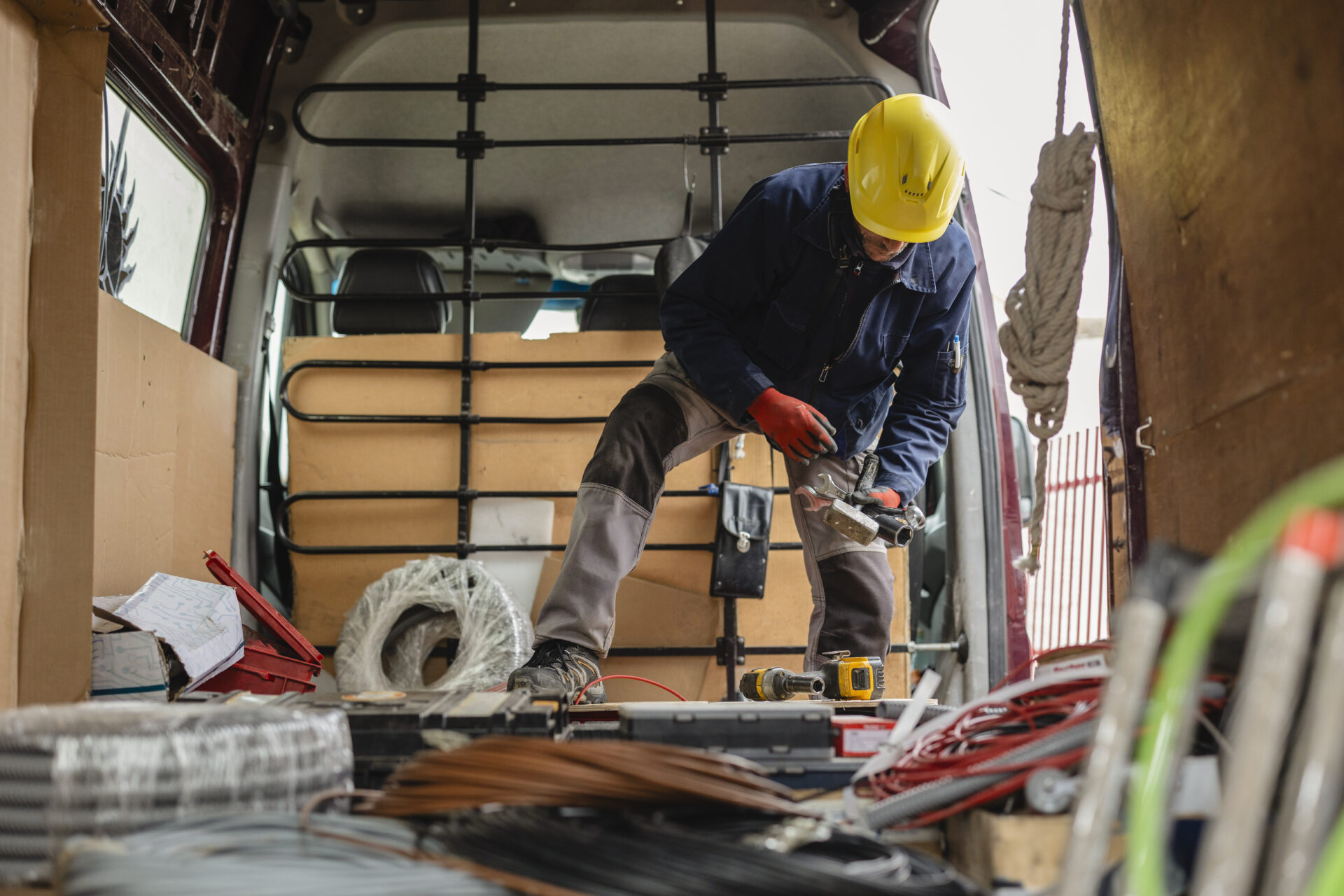
How do I choose the right van type for me?
Think about what you’ll use your van for, where you’ll drive, and how much space you need. The table below will help:
| Van Type | Examples | Pros | Cons |
|---|---|---|---|
| Panel Van | Ford Transit, VW Transporter, Volkswagen Crafter | Spacious, versatile, lots of choices | Bulky, harder in tight spaces, uses more fuel |
| City Van | Ford Transit Connect, VW Caddy, Citroen Berlingo, Peugeot Partner, Fiat Fiorino, Volkswagen Caddy | Compact, parking is easy, good for city, better on fuel | Less space, not ideal for long-distance hauls |
| Car-Derived Van | Ford Fiesta Van, Vauxhall Corsa van | Very easy to drive and park, cheap to run and buy | Small load area and low payload |
| Medium Van | Ford Transit Custom, Renault Traffic, Peugeot Expert, Citroen Dispatch, Fiat Scudo/Doblo, VW T6 | Good size balance, decent cargo, easier than big vans in tight spots | Not as much payload as a large van, can be tricky to park |
| Large Van | Peugeot Boxer, Citroen Relay, Fiat Ducato, Volkswagen Crafter | Biggest space, high payload, great for deliveries | Very large, hard to park, high fuel costs |
| Pick-up/4x4 | Nissan Navara, Toyota Hilux, VW Amarok, Ford Ranger, Ssangyong/KGM Musso | Versatile, off-road capable, open rear for gear | Hard on narrow roads, exposed rear means cargo may get wet/dirty |
How do I work out my used van budget?
To work out a budget for a used van, start by thinking about how much money you can spend without it causing problems for other things you need. Consider your income each month, and decide what part of that you can safely use for buying and running a van.
Once you’ve worked out your budget, you can check prices for the type of van you need, considering their age, mileage and condition, because older vans or ones with lots of miles usually cost less. You should also think about costs for running the van including fuel, insurance and road tax.

What specific costs should I include when working out my van budget?
To work out a used van budget, consider the following key cost factors to get a well-rounded estimate, covering both the purchase and ongoing expenses:
Purchase price:
Research market prices for the specific van type desired to find a realistic buying cost.
Insurance:
Obtain quotes based on driver profile and business to estimate insurance premiums.
Fuel/energy:
Calculate expected fuel or electricity costs based on projected mileage and fuel type.
Maintenance and repairs:
Budget for servicing and potential repairs, as used vans may need more frequent upkeep.
Tax and licensing:
Include costs for vehicle tax and any local fees required for operation.
VAT:
Check if VAT applies to the purchase and whether it can be reclaimed if bought by a business.
Additional costs:
Account for extra expenses like warranty plans, vehicle upgrades, or accessories.
| Cost Factor | Budget Considerations |
|---|---|
| Purchase Price | Research market prices for your chosen van type |
| Insurance | Obtain quotes based on driver/business profile |
| Fuel/Energy | Estimate using expected mileage and fuel type |
| Maintenance/ Repairs | Factor in servicing and potential repairs |
| Tax & Licensing | Include vehicle tax and local fees |
| VAT | Check applicability and reclaim eligibility |
| Additional Costs | Warranty plans, upgrades, or accessories |
Calculating all these elements will give you a well-rounded budget to comfortably cover both buying and owning your van.
Will there be VAT on top of the advertised price of a used van?
In the UK, VAT is typically charged at 20% of the sale price, but whether your pay it on a used van depends on several factors.
- VAT will usually be added to the sale price if buying from a VAT-registered business.
- VAT may be able to be reclaimed on the purchase.
- Some vans are sold under the Margin Scheme. (seller pays VAT on the difference between their purchase and sale prices, rather than on the full sale price)
- If sold under the Margin Scheme, VAT is calculated on the seller’s profit margin and included in the price.
- VAT may be able to be reclaimed on the purchase.
- Private sales generally do not include VAT.
- VAT rules differ for commercial vehicles.
If you’re buying from a VAT-registered business, VAT will usually be added to the sale price. However, some vans are sold under the Margin Scheme where VAT is only calculated on the seller’s profit margin and is already included in the advertised price.
If you’re a VAT-registered business purchasing a van for commercial use, you may be eligible to reclaim the VAT paid on the purchase, which can significantly reduce your overall costs. Private sales between individuals generally do not include VAT, as private sellers are not registered to charge it.
It is important to check with the seller whether VAT is included or extra before you buy. Also, for commercial vehicles, VAT rules can be different compared to regular cars.
If you’re unsure, ask the seller about VAT or speak to an accountant for advice on your specific situation.

Is insurance for used vans cheaper than new vans?
Yes, insurance for used vans is generally cheaper than for new vans.
This is mainly because used vans have a lower market value, so the cost to replace or repair them in case of damage or theft is less. Insurance companies consider this lower value when calculating premiums, which leads to more affordable insurance costs for used vans.
However, the exact price can still vary depending on factors like the van’s age, model, your driving history and where you live.

What should I check when inspecting and test driving a used van?
Use this checklist every time you view, or test drive a used van:
| Cost Factor | Budget Considerations |
|---|---|
| Purchase Price | Research market prices for your chosen van type |
| Insurance | Obtain quotes based on driver/business profile |
| Fuel/Energy | Estimate using expected mileage and fuel type |
| Maintenance/ Repairs | Factor in servicing and potential repairs |
| Tax & Licensing | Include vehicle tax and local fees |
| VAT | Check applicability and reclaim eligibility |
| Additional Costs | Warranty plans, upgrades, or accessories |
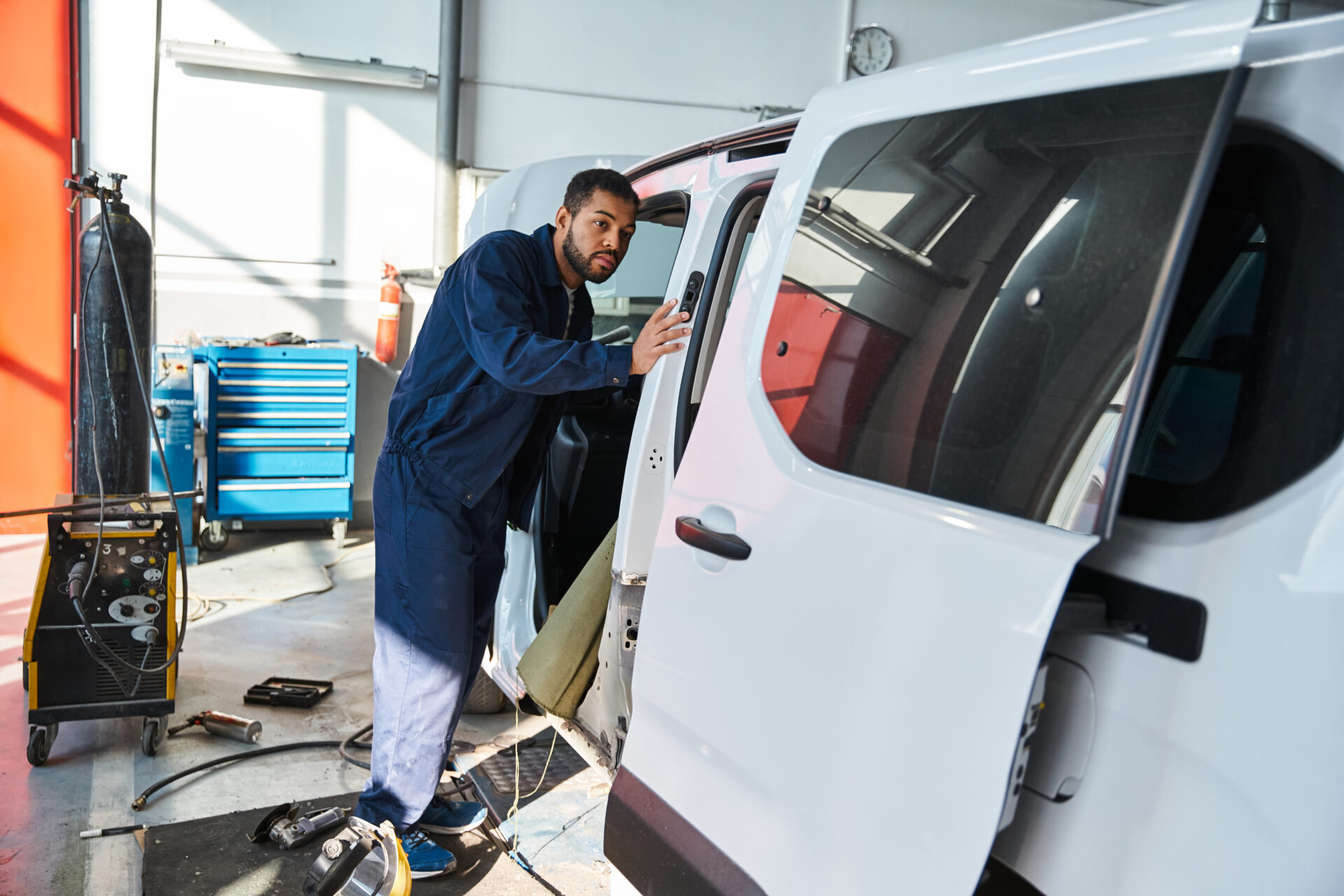
How do I find out the history of the used van I’m looking to buy?
To find the full history of a used van in the UK, you can take the following steps:
Get a vehicle history check:
Use services provided by companies like the DVLA, HPI Check, Check Car Details or Experian AutoCheck. These checks provide essential details including:
- Outstanding finance
- Previous accidents or insurance claims
- Recorded mileage history
- Whether the van has been stolen, in an accident or written off
- MOT history and advisories
Ask the seller for full service history:
Request all available service and maintenance records. Regular servicing by authorised dealers or trusted garages is a good sign of proper care.
Check the MOT history:
You can view MOT records online through the UK government website by entering the van’s registration number. It shows test results, mileage readings, and any advisories or failures.
Use the DVLA vehicle enquiry service:
This provides basic van details such as taxation and MOT expiry but doesn’t include full history.
Get a pre-purchase inspection from a mechanic:
An independent mechanic can check for hidden issues that might not appear in documents.
Although getting a full, flawless history may not always be possible, combining these checks gives you a comprehensive picture of the van’s background to buy with confidence.

How do I know if the van I’m buying has been serviced recently?
To find out if the van you’re buying has been serviced recently, you should:
Ask the seller for service records:
Request the full-service history, including receipts and stamps in the service book. These documents show when and where the van was last serviced and what work was done.
Look for a valid MOT certificate:
The MOT history can show recent inspections and advisories. You can check MOT records online using the van’s registration number on the UK government website.
Check for recent servicing stickers or notes:
Some garages place a service sticker on the windscreen or inside the door frame showing the date and mileage of the last service.
Inspect the condition of the van:
Signs like clean oil, no warning lights on the dashboard and well-maintained parts often indicate the van has been cared for and serviced regularly.
Get an independent inspection:
If you still have doubts, have a trusted mechanic check the van’s condition and look for signs that servicing is up to date.
Having proof of recent servicing gives you confidence that the van is less likely to have hidden issues or need urgent repairs.
Which vans in the UK have consistently good reviews?
Ford Transit Custom
Medium van
- Reliable
- Good payload capacity
- Great handling
- Strong resale value
Volkswagen Transporter
Medium van
- Durable
- Efficient
- Comfortable cabin
- Strong resale value
Mercedes-Benz Sprinter
Large van
- Spacious
- Excellent payload capacity
- Comfortable cabin
- Advanced technology
Peugeot Boxer
Large van
- Value for money
- Practical
- Good for heavy loads
- Competitive warranty package
Nissan e-NV200
Electric van
- Zero emissions
- Low running costs
- Great manoeuvrability
- Good range
Renault Kangoo ZE
Electric van
- Zero emissions
- Low running costs
- Compact
- Cost efficient
Citroen Relay
Large van
- Spacious
- Good value
- Reliable
- Low running costs
Ford
Fiesta
Car-derived van
- Versatile
- Compact
- Modern features
- Good payload capacity
The Citroen Berlingo, Peugeot Boxer and Expert, Transit Connect, FIAT Doblo, Ducato and Fiorino, Vauxhall Vivaro, Volkswagen Caddy and the Renault Trafic may also suit your needs – so you are not limited to a small range of vans.
What sort of mileage and running costs do these vans have?
| Van Model / Type | Typical Mileage Range (miles) | Fuel Efficiency | Payload Capacity | Running Costs (Fuel + Maintenance) |
|---|---|---|---|---|
| Ford Transit Custom (Medium Van) | 20,000 – 120,000 | Moderate (Diesel efficient) | Medium (Up to ~1,400 kg) | Moderate; diesel fuel and routine servicing needed |
| Volkswagen Transporter (Medium Van) | 15,000 – 100,000 | Moderate (Diesel) | Medium (Up to ~1,300 kg) | Moderate to high; robust but pricier servicing |
| Mercedes-Benz Sprinter (Large Van) | 30,000 – 150,000 | Lower (Large diesel engine) | High (Up to ~1,500 - 2,000 kg) | Higher due to size and premium brand servicing |
| Peugeot Boxer (Large Van) | 20,000 – 130,000 | Lower (Diesel) | High (Up to ~1,900 kg) | Moderate; reliable with reasonable servicing costs |
| Nissan e-NV200 (Electric Van) | 10,000 – 70,000 | Very high (Electric) | Low (Up to ~700 kg) | Low running costs; electricity cheaper, fewer parts |
| Renault Kangoo ZE (Electric Van) | 8,000 – 60,000 | Very high (Electric) | Low (Up to ~600 kg) | Very low; minimal maintenance and electric charging |
| Citroen Relay (Large Van) | 25,000 – 120,000 | Lower (Diesel) | High (Up to ~1,900 kg) | Moderate; reliable with reasonable running costs |
| Ford Fiesta Van (Car-Derived Van) | 10,000 – 80,000 | High (Petrol/Diesel small engine) | Low (Up to ~600 kg) | Low running costs; smaller engine, cheaper parts |
The average mileage for an electric van is around 10,000 per year. This is due to it being a newer market, and EVs generally being used for shorter urban routes.
Medium-sized vans have an average mileage of roughly 12,500 per year, and large-sized vans between 15,000 – 20,000.
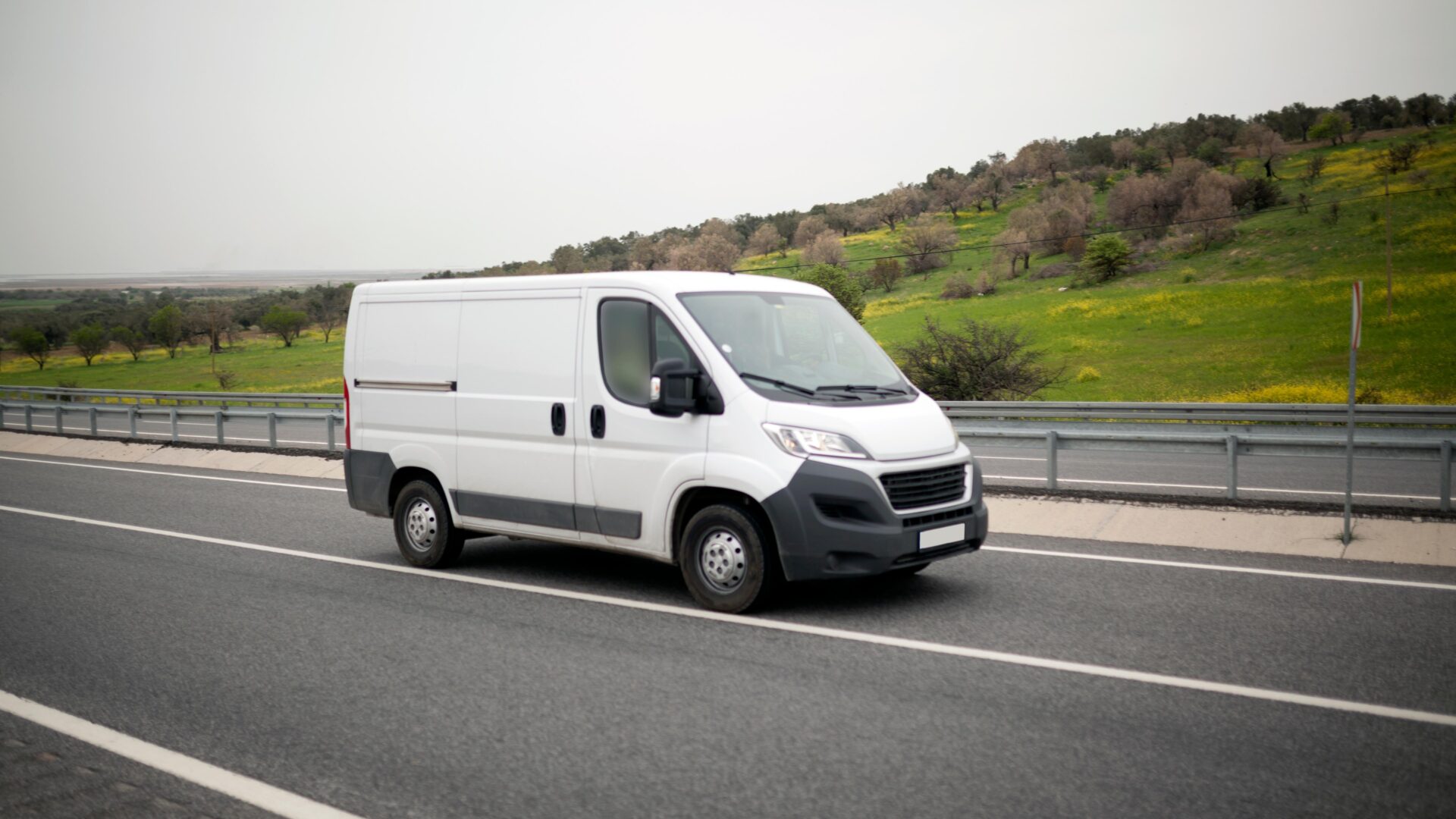
What’s the best used van between £10-20K?
With a budget between £10,000 and £20,000, you can look for a wider range of vans, often with lower mileage, a better specification, and from more recent model years.
This price bracket is a sweet spot for finding a van that offers a great blend of value, modern features, and long-term reliability.
Here is a table of some of the best used vans in the UK within this budget, complete with their pros and cons.
| Van Model | Class | Pros | Cons |
|---|---|---|---|
| Ford Transit Custom | Medium | Excellent All-Rounder: Known for its fantastic, car-like driving dynamics, comfortable cab, and wide range of configurations. It has a high payload capacity. Availability: As the UK's best-selling van, the used market is flooded with options, so you can be selective. Affordable to Run: Good fuel economy from the EcoBlue engines and readily available parts mean lower running costs. | Security: Some older models have known security vulnerabilities, so it's essential to check for additional security measures like deadlocks. Interior Plastics: The interior can feel a bit basic on lower-spec models compared to rivals. |
| Volkswagen Transporter | Medium | Build Quality & Durability: Known as a premium workhorse, it's built to last and holds its value exceptionally well. Refined Drive: The cabin is well-laid-out, and the ride is quiet and comfortable, making it a great option for long journeys. Desirable: Due to its "cool" image, it's a popular choice for both trades and leisure (camper conversions), which means there are plenty of specialist parts and a strong community. | Higher Price Tag: You will likely get an older model or one with higher mileage for the same price as a newer Transit Custom. Running Costs: Parts and servicing from a VW dealer can be more expensive than for a Ford. |
| Mercedes-Benz Vito | Medium | Prestige & Comfort: Offers a premium feel, particularly in the cab, with a comfortable driving position and good refinement. Towing Capacity: The rear-wheel-drive models offer excellent towing ability. Safety: Often comes with a good level of standard safety features. | Payload: The payload capacity can be lower than some of its main rivals. Repairs: While reliable, any maintenance or repair work can be costly, as with most premium brands. Interior: While comfortable, the interior of older models can be quite utilitarian and lack the modern features of some competitors. |
| Citroën Dispatch / Peugeot Expert / Vauxhall Vivaro / Toyota Proace | Medium | Excellent Value: As a result of their shared platform, these vans are a great value, and you can often get a newer van for your budget. Efficient Engines: The 1.5-litre and 2.0-litre diesel engines offer great fuel economy. Practicality: Good payload and a compact exterior for their load capacity. Toyota Warranty: The Toyota Proace is a standout for its up to 10-year warranty (subject to terms), which offers incredible peace of mind. | Driving Position: The driving position and interior design might not be as comfortable as a Transit Custom or as refined as a Transporter. Aesthetics: The interiors, while practical, lack the flair of a Transit or Transporter. |
| Renault Trafic | Medium | Good Value: The Trafic often comes in at a slightly lower price point than the Transit Custom and Transporter, making it a very appealing option. Efficient & Practical: Known for its decent payload and good fuel economy. Comfortable Cabin: The interior is well-designed with plenty of storage, and it offers a solid and comfortable drive. | Resale Value: It doesn't hold its value as well as a Ford or VW. Older Models: Early models lacked some modern safety features, so it's best to look for a facelifted version from 2019 or newer. |
| Ford Transit | Large | Load Space: If you need maximum space, the large Transit is the go-to. It has a massive load bay and is extremely versatile. Reliability & Parts: The sheer number of Transits on the road means parts are abundant and relatively cheap, and mechanics are familiar with them. Durability: Built as a genuine workhorse, it's robust and can handle tough jobs. | Less Refined: Not as comfortable or car-like to drive as the medium-sized vans. Running Costs: Less fuel-efficient and more expensive to run than smaller vans, especially around town. Maneuverability: The large size can make it difficult to park and navigate in tight urban areas. |
| Nissan NV200 | Small | Compact size for easy city driving and parking. Good fuel economy and low running costs. Practical load space for small loads. Reliable and affordable to maintain. | Limited payload capacity compared to medium vans. Basic interior with fewer features. Not ideal for larger loads or towing. |
| Vauxhall Combo | Small | Efficient engines provide good fuel economy. Practical size for urban use and deliveries. Comfortable cabin with modern features in newer models. Affordable purchase price. | Smaller payload than medium vans. Ride can be firm on rough roads. Less refined design compared to bigger vans. |
| Fiat Doblo | Small/Medium | Spacious interior for its size, good payload capacity. Economical on fuel and low running costs. Smooth driving experience for city and motorway. Versatile and reliable. | Older models may lack modern tech and safety features. Interior materials can feel dated. Resale value not as strong as competitors. |
| Fiat Fiorino | Small | Very compact and easy to park in tight city spaces. Good fuel efficiency and low running costs. Practical for small deliveries. Affordable to buy. | Limited load space and payload. Not suited for larger or heavier loads. Basic interior. |
| Fiat Ducato | Large | Huge load space and payload capacity. Popular with businesses for large hauls and conversions. Good range of efficient engines. Comfortable to drive for a large van. | Large size can be challenging in urban areas. Higher fuel costs than smaller vans. Some reliability concerns especially with older models. |
| Citroën Berlingo | Small | Practical size great for city driving and deliveries. Good fuel economy and low running costs. Comfortable ride with easy handling. Well-equipped for its class. | Limited space compared to medium vans. Basic interior in older models. Payload lower than bigger vans. |
| Volkswagen Caddy | Small | Quality build and refined drive. Good fuel economy and practical interior. Comfortable for driver and passengers with modern features. Popular choice so parts and service are widely available. | Limited load space compared to medium vans. Older models may lack latest safety features. Can be pricier than some small vans. |

Which vans in the UK have the biggest depreciation?
Depreciation is the drop in a van’s value over time, and buying a van that depreciates less can save you money if you decide to sell it later.
Medium vans like the Ford Transit tend to hold value better compared to larger, less fuel-efficient models, but exact depreciation also depends on age, mileage, condition, and market demand.
In the UK, vans with the biggest depreciation tend to be:
- Large vans such as Peugeot Boxer, Citroen Relay, Fiat Ducato, and Volkswagen Crafter:
These vans often have higher initial prices and steep early depreciation because they are more expensive to buy new and have higher running costs.
- Luxury or premium branded vans:
With higher starting prices, they tend to lose value faster.
- New model launches or vans with rapid technological updates:
Older versions can depreciate more quickly.
- Vans with high fuel consumption or poor fuel economy
- Smaller vans like city vans and car-derived vans:
These experience less depreciation due to their lower purchase price and better fuel efficiency.
Are there lots of used electric vans available?
There are used electric vans available in the UK that are now out of manufacturers’ warranty. Early electric vans, which have been on the market for several years, are reaching the end of their original manufacturer warranty periods, typically around 3 to 5 years depending on the brand and model.
Examples of early electric van models include:
- Nissan e-NV200 (first launched around 2014).
- Renault Kangoo ZE (since around 2011).
Many ZE models had a battery lease arrangement, which meant paying a separate monthly fee for the battery. Buyers of used models with this setup would need to take over the lease. Some later models offered the option to purchase the battery outright.
- Volkswagen e-Crafter (introduced mid-2018).
- Mercedes-Benz eVito (launched around 2018).
These older models may now be out of their free manufacturer warranty, which usually spans 3 years or over a specified mileage, although battery warranties often last longer (typically 8 years or 100,000 miles).
When buying one of these used electric vans out of warranty, it’s important to consider:
Battery health and condition, as batteries are expensive to replace:
The cost of replacing new batteries for an electric van like the Volkswagen e-Crafter in the UK typically ranges between £10,000 to £15,000. This estimate depends on factors such as the battery capacity, labour costs, and whether the replacement is done under warranty or independently. or authorised service centres for precise quotes and potential warranty plan options.
Mileage restrictions – many early electric vans have a limited range:
You need to bear this in mind and these types of electric vans are suitable for short local deliveries and trips.
Any service history and previous repairs.
Availability of extended warranty plans:
A plan from Warrantywise can help with future repair requests.

Should you buy a used electric, petrol or diesel van?
Choosing between a used electric van and a used internal combustion engine (ICE) van depends on your specific needs, budget, and circumstances. Here are some key points to help you decide:
Used electric vans:
| Pros: | Cons: |
|---|---|
| Lower running costs | Higher purchase price compared to ICE vans |
| Reduced maintanence | Limited driving range on single charge |
| Environmentally friendly | Charging infrastructure may be limited depending on location |
| Can benefit from government grants or incentives | Battery degradation can affect resale |
Used petrol & diesel vans:
| Pros | Cons: |
|---|---|
| Generally lower upfront purchase cost | Higher running costs |
| Well-established fuelling infrastructure | Higher emissions |
| Fast refuelling, higher range | Sale of ICE vehicles being phased out |
| Wide variety of models and sizes available | Regulations in place restricting ICE vans in cities |
Which should you choose?
If you’ll be taking short, urban trips and have access to reliable charging, a used electric van can save money on running costs – and support your green credentials.
If you need longer range with versatility for different routes a petrol or diesel van might be more practical.
Consider your business needs, budget, and local infrastructure before deciding. Both have pros and cons, so choose the one that fits your daily usage best.
What is the benefit of having a Warrantywise plan with my used van?
A warranty plan helps shield you from the cost of the most regular repair requests, offering you more security and helping with unexpected bills. That way, you can drive confidently everywhere, every day.
Comprehensive protection:
Protects against unexpected repair costs, giving peace of mind for mechanical and electrical failures.
Nationwide repairs:
Access to a wide network of authorised repair centres across the UK, making it convenient to get your van fixed.
Flexible plans:
Various warranty options to suit different van ages and mileage, allowing tailored protection to fit individual needs.
Roadside assistance:
Often includes emergency breakdown assistance for added security on the road.
Vehicle hire:
Up to £75 per day (for a maximum of 10 days) to help while your van is being repaired.
Transferable warranty:
Some policies allow the warranty to be transferred to new owners, enhancing resale value.
No extra fees:
Many plans have no or low fees, reducing your out-of-pocket costs during repairs. You can, however, offer to pay a voluntary contribution towards your re[pair request to bring the costs of the repair down.
Manufacturer-approved:
Backed by a trusted company with a good reputation for customer service and repair request handling.
Peace of mind:
Helps business owners avoid large unexpected repair bills, allowing better financial planning.
Conclusion:
When purchasing a used van, it’s essential to think beyond the initial price tag.
While the cost of the vehicle itself is often the first thing buyers focus on, there are several additional expenses that can significantly impact your overall budget. These include insurance premiums, regular fuel costs, maintenance and unexpected repairs that can arise as the vehicle ages.
To protect yourself from those surprise repair bills and enjoy greater peace of mind, consider taking out a Warrantywise plan. Our comprehensive plans helps safeguard you against unforeseen issues, so you can keep your van on the road and your business running smoothly without worrying about costly breakdowns.
Discover more.
Further Warrantywise articles you might find useful

10 of The World’s Most Dangerous Roads.
As car enthusiasts, driving on roads that prove to be a challenge is always a task worth attempting. Imagine driving … Continued

13 of the Craziest Things You Can Drive.
Ever wanted to drive a tank on the road? Or cruise in a flying car? From six-wheeled supercars to amphibious … Continued

Reliability Index 2024.
Your next car purchase can be guided by Warrantywise’s detailed analysis of vehicle reliability based on a variety of data sources
Sources
[1] Driving an electric or hydrogen-powered vehicle – GOV.UK
[2] https://www.loadsofvans.com/blog/van-depreciation-rates






